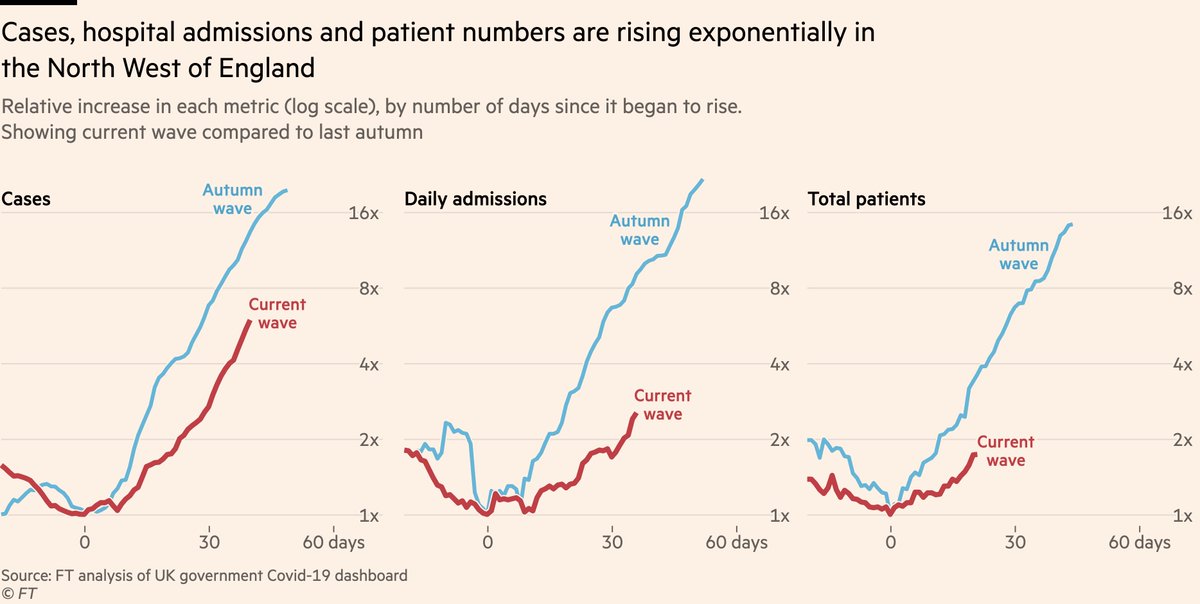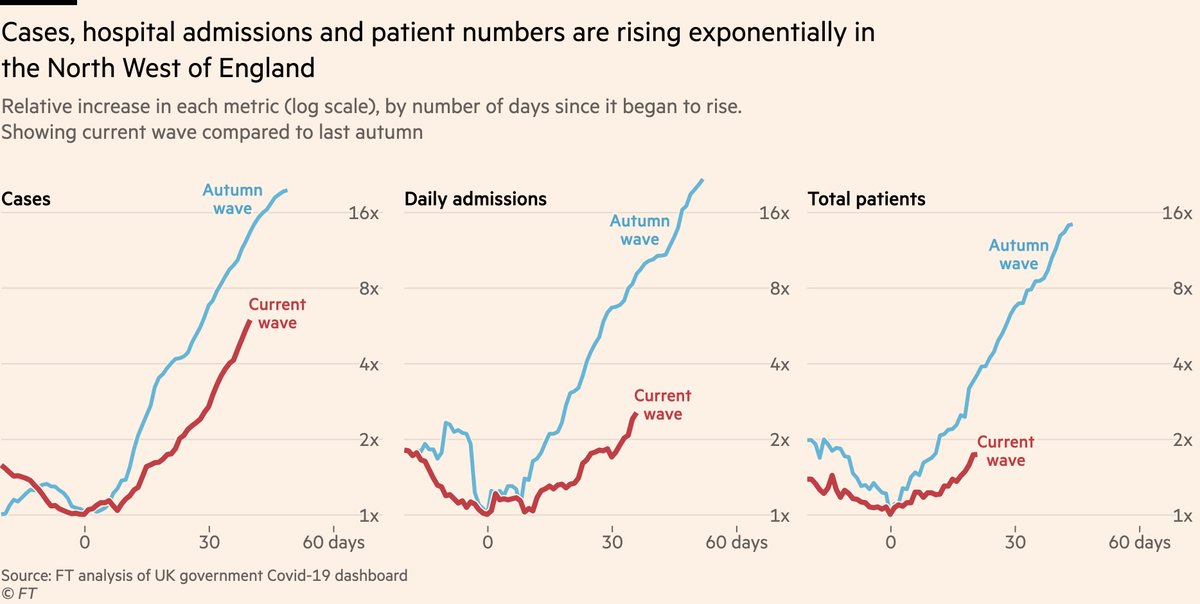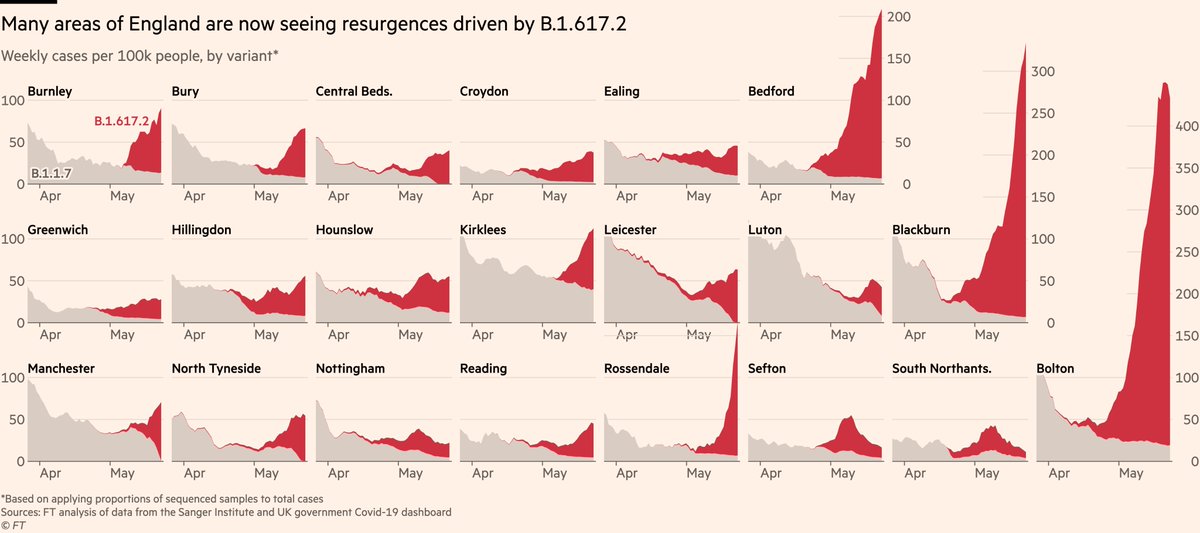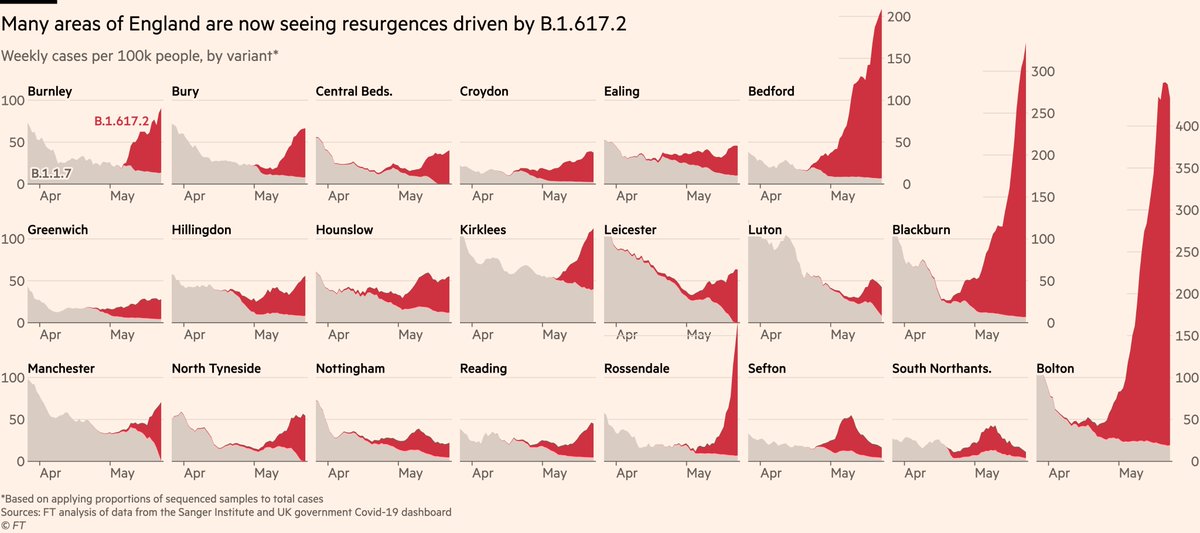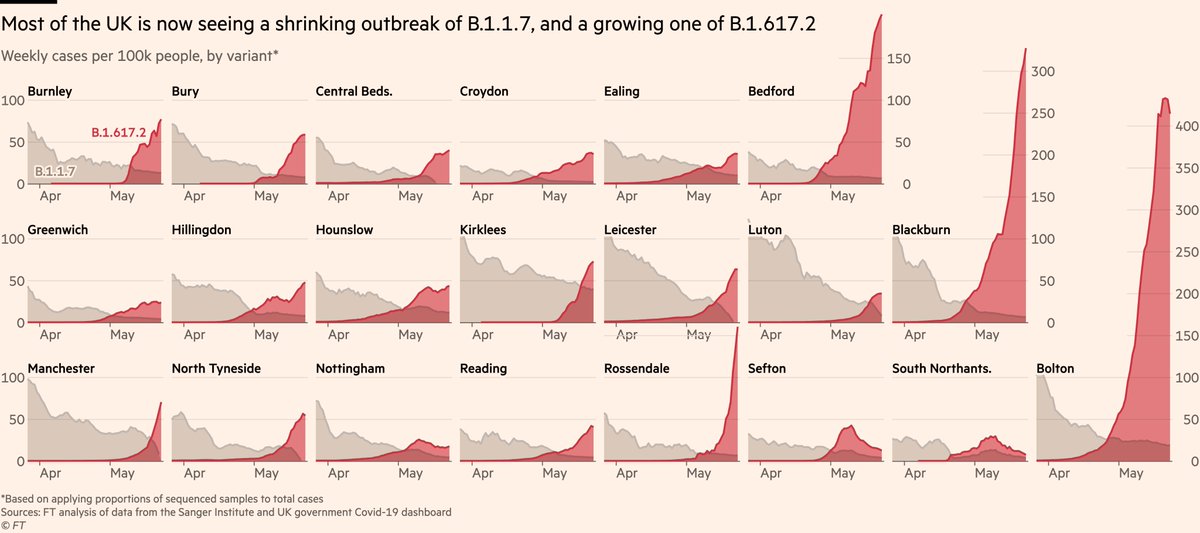
Another excellent chart idea from @BristOliver
Just as in previous waves, cases today are an excellent guide to where hospital admissions will be 10 days into the future.
But there is a difference this time around, and here come two charts to illustrate it...
Just as in previous waves, cases today are an excellent guide to where hospital admissions will be 10 days into the future.
But there is a difference this time around, and here come two charts to illustrate it...
https://twitter.com/BristOliver/status/1404857813248118784
Here’s the same data, but adding the autumn/winter wave, and expressing everything as % of January peak
Spot the difference between waves:
Admissions track cases ~perfectly both times, but this time red admissions line is lower: a smaller share of cases require hospital (💉💪)
Spot the difference between waves:
Admissions track cases ~perfectly both times, but this time red admissions line is lower: a smaller share of cases require hospital (💉💪)

And here’s the same data using another @BristOliver concept: admissions as share of cases 10 days earlier.
Today admissions are ~4% of lagged cases. At this point in the autumn wave, they were ~8%.
Today admissions are ~4% of lagged cases. At this point in the autumn wave, they were ~8%.

To conclude:
A wave is still a wave, and admissions still follow cases, but vaccines mean fewer cases are now severe enough to require hospital.
Keep getting your jabs, folks.
A wave is still a wave, and admissions still follow cases, but vaccines mean fewer cases are now severe enough to require hospital.
Keep getting your jabs, folks.
And what feels like an obligatory addendum these days:
No, saying that vaccines are reducing hospitalisation rates is not saying "nothing to worry about here folks".
4% of cases can still mean a lot of admissions when cases are very high.
But it’s better than 8%.
No, saying that vaccines are reducing hospitalisation rates is not saying "nothing to worry about here folks".
4% of cases can still mean a lot of admissions when cases are very high.
But it’s better than 8%.
• • •
Missing some Tweet in this thread? You can try to
force a refresh



